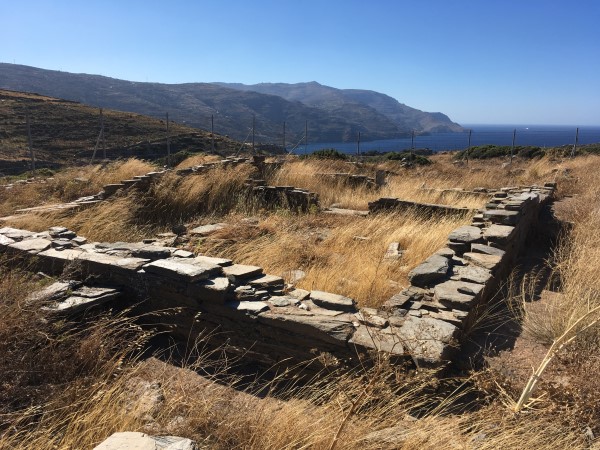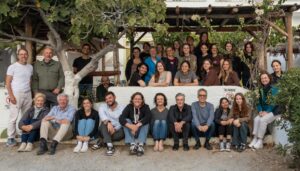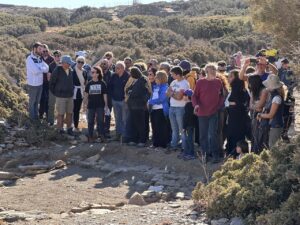Fieldwork is well underway at Zagora, on the Aegean island of Andros, for the 2019 season. I managed to sneak some time with Associate Professor Lesley Beaumont and Dr Paul Donnelly, two of the project’s four co-directors, to learn more about the project so far.
In this post – the first of a two-part series – they recount some behind-the-scenes challenges and findings from the early Zagora excavations.
Logistical challenges of the early excavations
Lesley has been working on Zagora since 2010, with fieldwork starting in 2012. In 2010, Lesley, along with Professor Meg Miller and Dr Stavros Paspalas, ran a workshop in Athens for key participants of the project. The attendees included the directors and some of the field specialists as well as Dr Jill Carington-Smith, who was a member of the first Australian team that excavated at Zagora, under the directorship of Professor Alexander Cambitoglou, in the 1960s and 1970s. Zagora was always going to be a difficult site to access, so the workshop was to include a site visit to discuss the plans for the excavation and project.
The first curve ball appeared when the site visit had to be delayed due to a 24-hour ferry strike. Which turned into a 48-hour strike, then a 72-hour strike and soon looked like it was never going to end! After a mad scramble to charter a private boat (all quotes were coming in over budget) the situation was looking hopeless, until one lovely boat operator directed Lesley to a helicopter company. Helicopters, as it turns out, are cheaper than private boats!
What could have been a disaster for the project actually became a great asset as the first aerial photographs of the renewed Zagora project were taken during that helicopter ride. This was the first of many reminders that Zagora is a very isolated site.
Amid all of this excitement, the co-directors, representing the AAIA and the University of Sydney’s Department of Archaeology, were also applying to the Australian Research Council (ARC) for grants to facilitate the project. To strengthen the ARC grant application the co-directors collaborated with the Powerhouse Museum through the advocacy of Paul Donnelly, a curator at that institution and archaeology graduate, as the museum had access to a wider audience and could provide updates on the project through a tailored website and blogs.
Paul joined Team ZAP as part of this collaboration and now works at Sydney University Museums where he continues to reach wide audiences, particularly through his work involving the university’s soon-to-be-opened Chau Chak Wing Museum. Paul hopes in the future to mount an exhibition on Zagora in the Chau Chak Wing Museum.
Findings of the 1967–1974 seasons
While Zagora is now an isolated and hard-to-reach site, it was originally an accessible settlement with access to the sea. The site is a prime example of an Early Iron Age settlement, with hugely significant archaeology, in a stunning location. Zagora is unique as we have access to the whole site as it was left in approximately 700 BCE.

The excavations between 1967–1974 uncovered less than 10% of the site and, as is common in archaeology, they raised more questions than answers.
Those excavations focused on religious and domestic areas within the settlement. The sanctuary and houses were therefore the focus of attention, though important work was also conducted on the settlement’s fortification wall.

In the next post, Paul, Lesley and I talk further about what they hope to achieve during the current archaeological program. Stay tuned! In the meantime, follow us on Instagram: @zagora_archaeological_project

